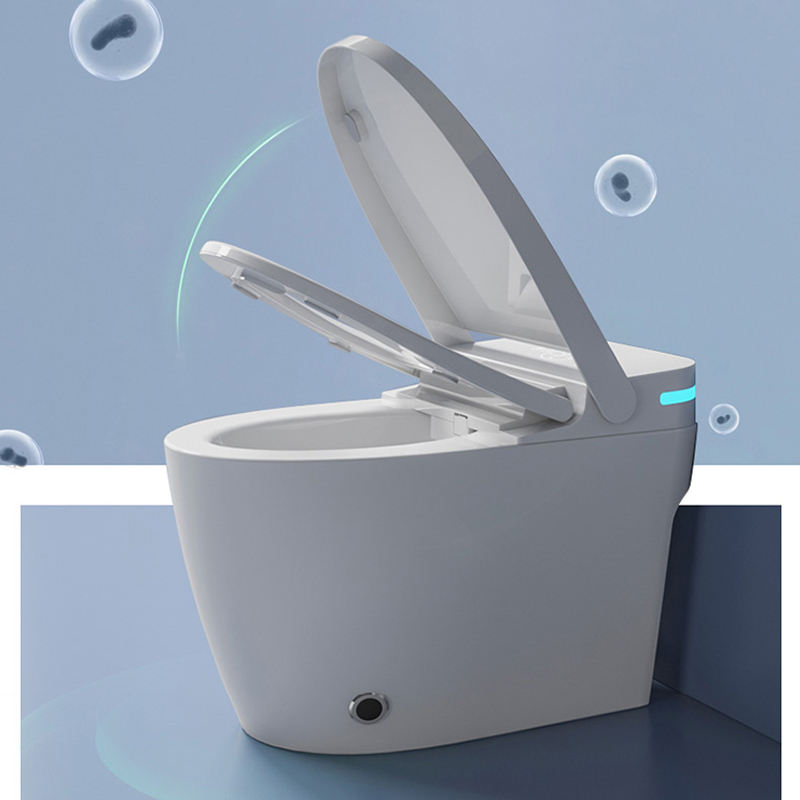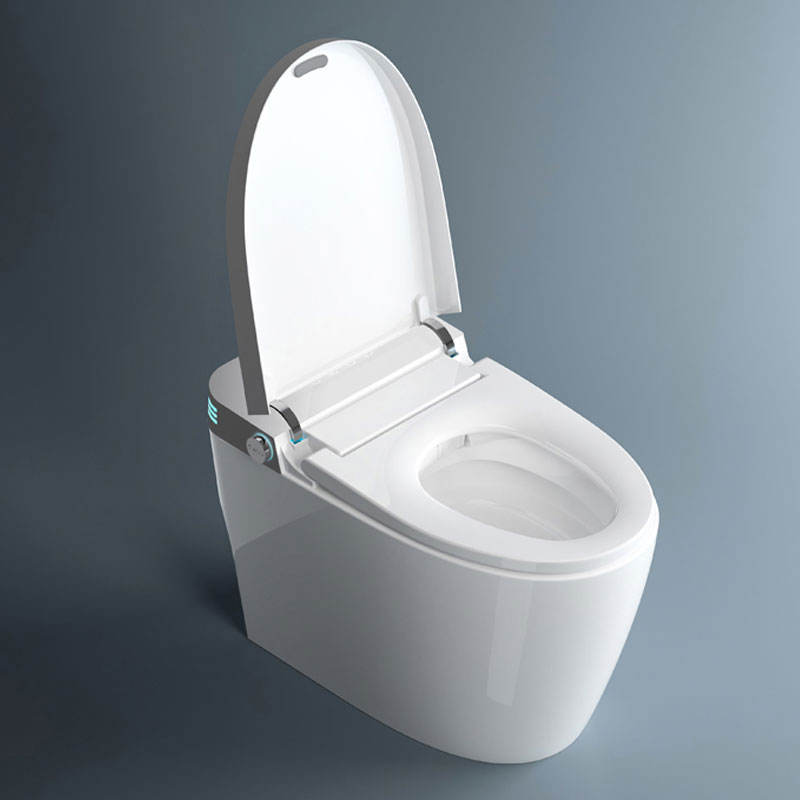Whether your toilet seat and toilet fit together mostly depends on the following three factors:
- the length of the toilet seat,
- the width of the toilet seat and
- the spacing between the drill holes for the fixing elements.
You can take these measurements either using your old toilet set or simply directly on the toilet itself. To determine the length, measure the distance between the centre of the drill holes and the front edge of the toilet with a ruler. Then measure the width, which is the longest distance between the left and right side of the toilet. Finally, you just need to measure the distance between the two fixing holes at the back of the toilet, again from the centre of each hole.
If the toilet lid and seat are longer or wider than the ceramic, the toilet seat may not sit right on the toilet, which causes noticeable and uncomfortable wobbling. At the same time, a seat that is too small will not completely cover the edges, again causing instability. If the toilet seat is the correct width but slightly too short, it is often possible to shift the seat forward by turning or pushing the fixing elements. However, by moving the hinges slightly forwards or backwards and then fixing them, you can usually only compensate for a difference of up to around 10 mm. Conversely, there is no such leeway with the width: here, the toilet seat and toilet dimensions really do have to match exactly.
While the size of the toilet seat must then fit the size (and shape, but more on that later) of the toilet, you tend to have considerably more leeway with the hole spacing for the rear fastening. That is why the sizes as defined by the manufacturer usually state both the minimum and maximum possible hole spacing. However, if the fixing holes on the toilet don’t match the hole spacing on the toilet seat, you may not be able to install the seat. To be sure, you should therefore always choose a toilet seat with dimensions matching those of your toilet.
There is no universal standard for toilet or toilet seat sizes in the UK. However, certain patterns have developed.
The following combinations of toilet seat lengths and widths are relatively popular:
- width 35 cm, length 40-41 cm
- width 36 cm, length 41-48 cm
- width 37 cm, length 41-48 cm
- width 38 cm, length 41-48 cm
Certain standard measures have also developed for the distance between the fixing hinges:
- 7-16 cm
- 9-20 cm
- 10-18 cm
- 11-21 cm
- 14-19 cm
- 15-16 cm
The fixing elements of most modern toilet seats are easily adjustable and not fitted rigidly. More and more models also have rotatable hinges, which can bridge almost double the distance between the fixing holes as needed. This explains the at times considerable differences between the minimum and maximum spacing of the drill holes.
The second decisive factor alongside the size of the toilet seat is the shape of the toilet bowl. Toilets with round or slightly oval openings are the most popular. For this reason, there is also a wide selection of toilet seats available for these models. Custom size toilet seats are available for the D-shaped or square shaped toilets that are often found in clearly styled bathrooms with modern furnishings.
If you have the product description and technical specification booklet from the toilet manufacturer, you can find all of the important information such as the shape and size of the toilet seat here. If you are unsure of your toilet model, you can simply follow our step-by-step instructions to find the perfect toilet seat for your toilet.
Step 1: Remove the old toilet seat
First, remove the old toilet seat so that you have a clear view of the toilet. To do this, you should have a corner pipe wrench or water pump pliers at the ready in case you can’t loosen the fixing nuts by hand, plus some penetrating oil to loosen any nuts that are stuck.
Step 2: Determine the shape of your toilet
Now you can have a look and decide if your toilet corresponds with the so-called universal shape (slightly circular with rounded lines). This is the standard shape for toilets and likewise the shape for which you will find the widest range of toilet seats. Also widely popular are oval shaped toilets that are significantly longer than they are wide, as well as the aforementioned D-shaped toilet, characterised by its straight back edge and lines that flow gently forward.
Step 3: Measure the exact length of your toilet bowl
Once you have determined the shape of your toilet, you need to work out the size of the toilet seat. To do this, you need a ruler or tape measure. First, measure the distance from the front edge of the toilet to the centre of the drill holes that fix the toilet seat at the back of the bowl.
Step 4: Measure the exact width of your toilet bowl
This value is determined by finding the widest point on your round, oval or D-shaped toilet bowl and measuring from left to right on the outer surface.
Step 5: Measure the distance between the fixing holes
This dimension needs to be measured precisely to find the exact distance between the centre of the drill holes on the left and right hand side.
Step 6: Deciding on a new toilet seat
Once you have determined the relevant measurements and distances (which are best written down), you can look for a suitable toilet seat.
The toilet seat should ideally fit the toilet dimensions as precisely as possible, though differences of less than 5 mm don’t usually pose a problem. If the differences exceed this, we recommend choosing a better suited model.
Your toilet seat should be made from a high-quality material, such as Duroplast or real wood. You can also base your decision on weight: if in doubt, favour the heavier model. As a general rule, toilet sets weighing at least 2 kg are sufficiently robust and will not bend under the weight of heavier people.
When it comes to the hinges, you should not compromise on durability or quality. As such, metal hinges are the best choice. They are considerably more robust and durable than models made of plastic or other materials.
On soft-closing toilet seats the hinges are fitted with additional rotational dampers that prevent the lid from closing too lid quickly and causing a loud clatter. A light tap of the lid is all that it takes to send it gliding down gently and soundlessly. In households with small children, the soft-closing mechanism prevents fingers from getting trapped in toilet seats that fall down quickly. In this way, the soft-closing mechanism contributes to basic safety in the home.
Post time: Jun-23-2023





